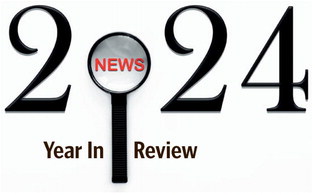FWP To Implement Strategy For Wildlife Movement, Migrations
With the understanding that private lands, particularly working landscapes, are a vital component for wildlife habitat, Montana Fish, Wildlife & Parks has developed a new strategy addressing wildlife movement and migration.
The new strategy was developed over the last year out of experience working with conservation organizations, landowners and others in response to growing public interest in conserving habitat for wildlife movement and migration.
FWP will use the new strategy to further integrate efforts related to wildlife movement and migration into its existing policies and programs. The intent is to better highlight the work FWP staff already do related to wildlife movement and migration, and to strengthen that work where necessary.
“For decades wildlife conservation work in Montana has focused on preserving important wildlife movements between winter and summer range,” said FWP director Martha Williams. “In fact, that was the impetus behind our very first game ranges. We know this work has to be done in partnership with private landowners whose working lands often represent important habitat for Montana’s wildlife.”
The strategy allows FWP and partners to continue to balance the positive aspects of wildlife movement, such as ensuring wildlife populations can access crucial seasonal habitats and remain connected, with challenges such as competition on private lands with livestock for critical winter range and disease transmission.
The strategy brings into focus how FWP will be inclusive by bringing partners and diverse values together to conserve wildlife in a way that is driven by local communities, private landowners and conservation interests.
“The viability of our ranch business and others like it is essential to maintaining an intact Montana landscape conducive to wildlife movement,” said Heath Martinell, a rancher in southwest Montana. “We enjoy wildlife and consider them an indicator of land health, and at the same time they bring substantial costs and challenges to our business. That’s why I appreciate that FWP and partners are seeking out landowner feedback and perspectives on managing wildlife movement and migration across the state.”
Historically, wildlife movement and migration conservation has been a crucial piece of FWP’s focus. However, as human development increases across the West, public interest in the work is increasing. Recently, a group of hunting, conservation and private landowner organizations recommended that FWP formally address big game migration in policies and programs with suggestions such as selecting an agency lead for big game migration, updating prioritization criteria for big game in existing programs like Habitat Montana and requesting the Private Lands/Public Wildlife Council to facilitate public discourse around difficult issues related to wildlife movement and migration like disease transmission. Some of these recommendations were incorporated into the strategy.
“Like many of the conservation challenges here in Montana, safeguarding our big game migration corridors depends on strong collaboration and cooperative efforts between private landowners and Fish, Wildlife & Parks,” said Scott Laird, Montana field representative for the Theodore Roosevelt Conservation Partnership. “This strategy provides a blueprint for the continued success of these partnerships, which provide tremendous benefits to working lands and families, sportsmen and women, our wildlife and Montana’s economy.”
To view the terrestrial wildlife movement and migration strategy, visit fwp.mt.gov.


